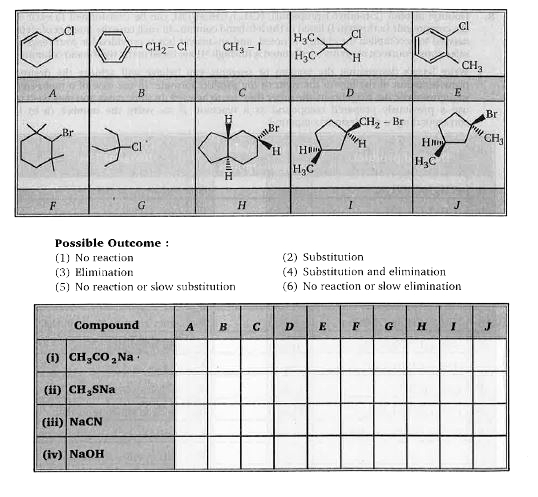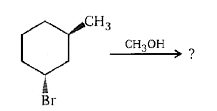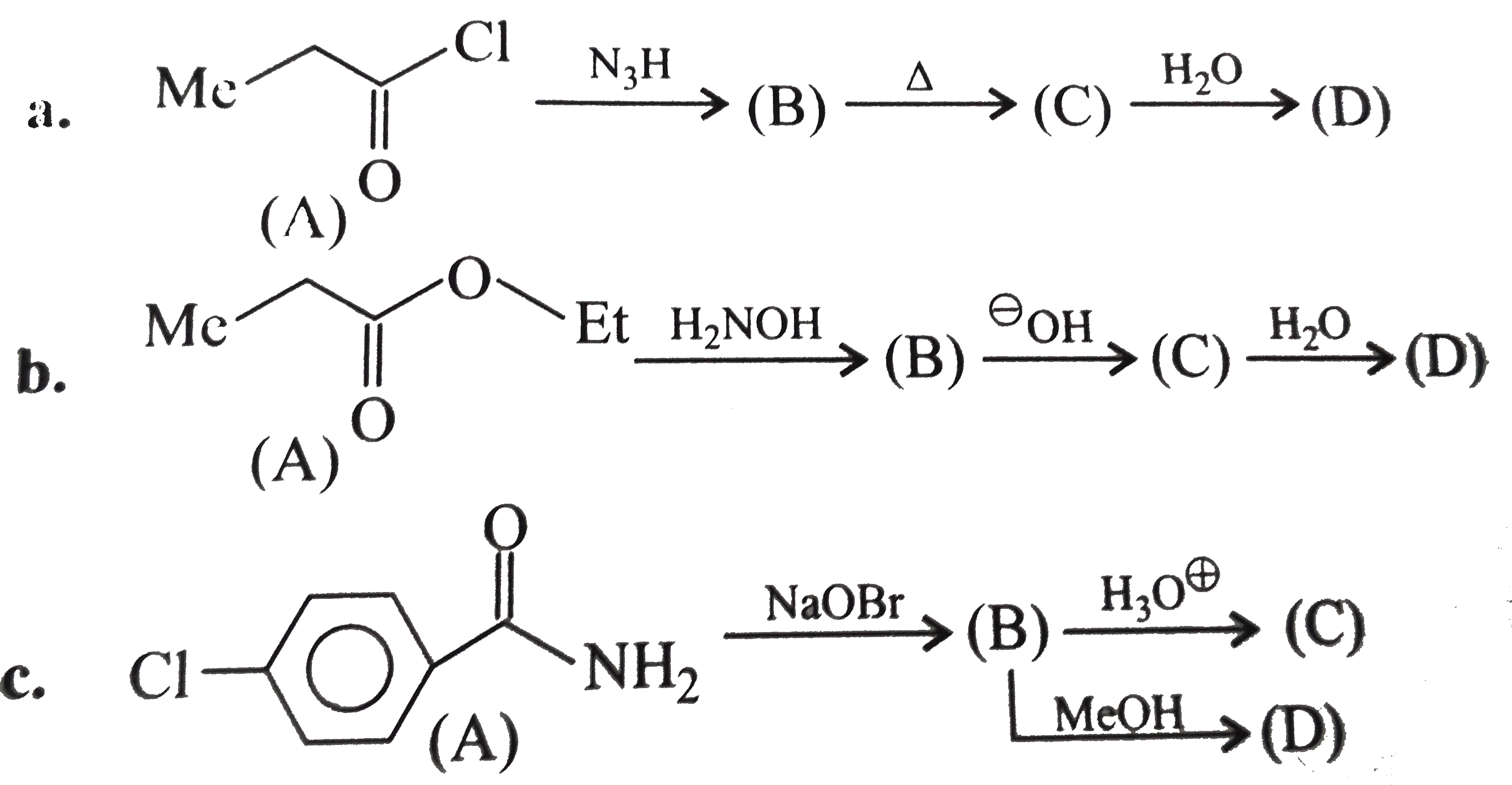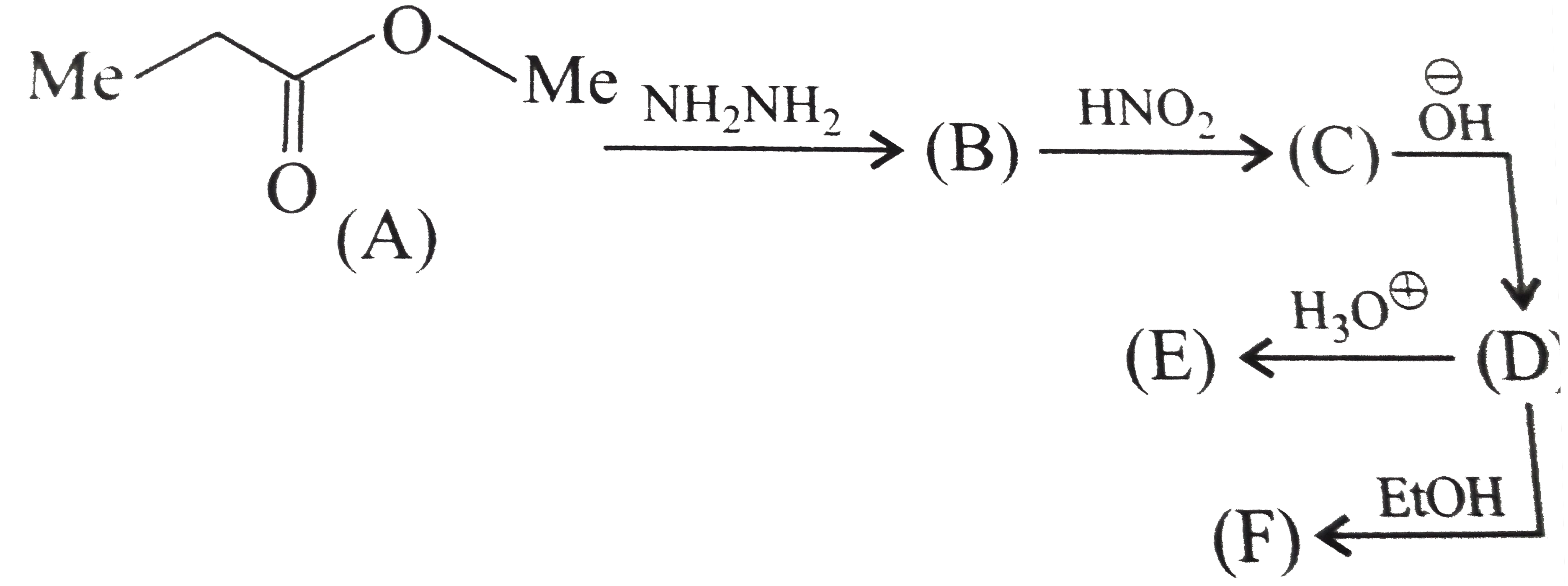Under the specified conditions, substrate X undergoes substitution and elimination reactions to give products A-D. A and B are stereoisomers, but not enantiomers. C and D are enantiomers. A is not an isomer of C. Which of the following could be the starting material X?
XH2O−−→ΔA+B+C+D
 Solution in Kannada
Solution in Kannada
(I)
(II)
(III)
(IV)
The correct Answer is:C
Topper's Solved these Questions
- BOOK - MS CHOUHANCHAPTER - 5C ALKYL HALIDES EXERCISE - LEVEL-23videos
5C ALKYL HALIDES
- BOOK - MS CHOUHANCHAPTER - 5C ALKYL HALIDES EXERCISE - LEVEL-2 (SUBJECTIVE PROBLEMS)1videos
5C ALKYL HALIDES
- BOOK - MS CHOUHANCHAPTER - ALCOHOL,ETHERS AND EPOXIDESEXERCISE - SUBJECTIVE PROBLEMS1videos
ALCOHOL,ETHERS AND EPOXIDES
Similar Questions
The following organic halide derivatives (A to J) are reacted in ethanol solution with each of the nucleophiles : acetate, methylthiolate, cyanide and hydroxide anions. Six possible results from these combinations of reactants are designated (1) through (6) below:
Write the number corresponding to your best estimate of the outcome ofeach reaction in the appropriate answer box below.
 03:22View Solution
03:22View Solution
X = Total number of substitution and elimination product(s). Find the value of X.15:48View Solution
Maximum number of moles of Ac2O consumed by reactant (A) is :06:21View SolutionTwo different G.R. (A) and (B) give the product (X) on reaction with ( C) and (D) respectively. Give the structures of (A), (B), ( C) and (D) .
05:18View SolutionComplete the following reaction :
(a)
(b)
( c)
(d)
( e)
(f) PhCHON3H/H⊕−−−−−→Δ(B)H3O⊕−−−→(C)+(D)
(g) View Solution
View SolutionUnder the specifed condition s ,subastan e X undergoes subition ans elimination eaction sto give products A-D ,Aand B stererisomers ,bu not enantiomers C and D are to enantiomers A is not an isomer of C which ofhte following could be the starting material X?
View Solution(x−a)(x−b)(x−c)(x−d)=Ax−c−Bx−d+C⇒C=
02:35View SolutionCH3COOHAgOH−−−−−→Br2[A]AgCN [B] HOH−−→ [ C] + [D], in reaction [C] & [D] are
03:55View SolutionCH3COOHAgOH−−−−−→Br2[A]AgCN [B] HOH−−→ [ C] + [D], in reaction [C] & [D] are
02:07View SolutionIdentify organic compounds [A, B, C, D]: CH_3CH_2COOH overset(লাল P //I_2)rarr A overset(KCN)rarr B underset(H_2O,Delta)overset(H^oplus)rarr C underset(Delta)overset(150-200^@C)rarr D
02:45View SolutionSpecify suitable reagents [A, B, C, D]: C_6H_5COOH overset(A)rarr C_6H_5COCl overset(B)rarr C_6H_5COC_6H_5 underset((ii)D)overset((i)C)rarr C_6H_5CH_2C_6H_5
04:44View Solutionউপযুক্ত বিকারক [A,B,C,D,E] উল্লেখ করো: HCHOA−−→CH3OHB−−→CH3BrC−−→CH3CN(i)D−−−→(ii)ECH3CHO
04:02View Solutionअभिक्रिया CH3ClKCN−−→(A)H2O−−→(B)NH3−−→(C)Δ−−→(D) में उत्पाद D है
01:37View Solutionमाना △(x)=∣∣ ∣∣x+ax+bx+a−cx+bx+cx−1x+cx+dx−b+d∣∣ ∣∣ तथा 2∫0△(x)dx=−16 जहाँ a,b,c,d समांतर श्रेणी में हो तब समान्तर श्रेणी का सार्व अंतर है
04:30View SolutionI) (A) and (B) are diastereomers II) (B) and (D) are enantiomers III) (A) and (D) are geometric isomer IV) (A) and ( C ) are optical isomer
05:42View SolutionCorrect statement for a-D Glucose and B-D Glucose I) Enantiomers II) Anomers III) Isomers IV) Not Enantiomers
05:08View Solution


